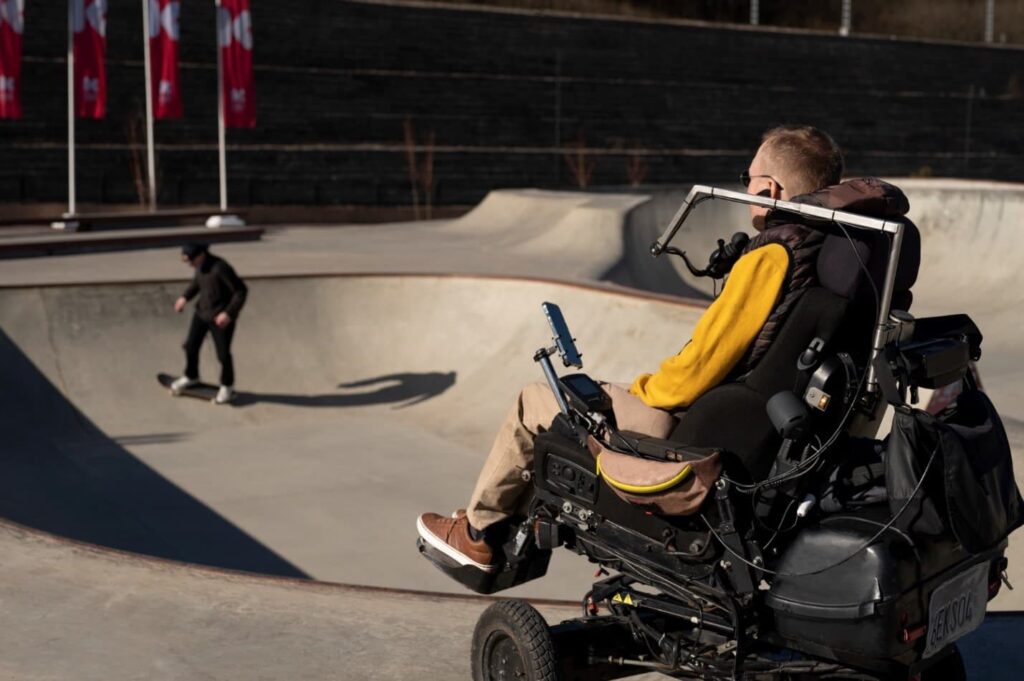Living with a disability can present numerous challenges, but thanks to advancements in technology, the landscape of healthcare for people with disabilities is rapidly evolving. Innovations in medicine are not only improving the quality of life for individuals with disabilities but also enhancing their access to essential healthcare services. In this article, we’ll explore some of the groundbreaking ways technology positively impacts the lives of those with disabilities.
Assistive Devices and Mobility Aids
One of the most significant areas where technology has had a transformative effect is the development of assistive devices and mobility aids. These devices empower individuals with disabilities to regain independence and improve their overall quality of life.
For example, powered wheelchairs with advanced navigation systems and obstacle detection sensors allow users to move more freely and safely in their environments. This enhances their mobility and reduces the risk of accidents and injuries.
Additionally, prosthetic limbs have become more sophisticated and lifelike thanks to innovations such as myoelectric control systems. These systems enable users to manipulate their prosthetics with greater precision, making everyday tasks more manageable. To learn more about the latest advances in mobility tools, visit https://play-fortune.ro/jocuri/pacanele-gratis.
Telemedicine and Remote Monitoring
The emergence of telemedicine has been a game-changer for people with disabilities, especially those living in remote or underserved areas. Telemedicine allows individuals to consult with healthcare professionals from the comfort of their homes, reducing the need for frequent, often challenging, trips to medical facilities.
Moreover, remote monitoring devices have become increasingly common, enabling healthcare providers to monitor patients’ health conditions closely. For example, individuals with chronic illnesses can use wearable devices to track vital signs and share this data with their doctors in real time, ensuring prompt intervention when needed.
Communication and Augmentative and Alternative Communication (AAC) Devices
Technology has revolutionized communication for individuals with speech and language disabilities. Augmentative and Alternative Communication (AAC) devices use speech-generating software and advanced interfaces to give a voice to those who are non-verbal or have severe communication impairments.
These devices range from simple picture-based communication boards to high-tech tablet apps that can translate text to speech. For many individuals, AAC devices are a lifeline, enabling them to express their thoughts, needs, and emotions effectively.
Accessibility in the Digital World
In today’s digital age, access to information and online services is essential for everyone, including people with disabilities. Technology has driven significant improvements in digital accessibility, making websites, apps, and online content more inclusive.
Screen readers, for instance, provide blind and visually impaired individuals with the ability to navigate websites and consume digital content through synthesized speech or Braille displays. Web developers are also increasingly adopting accessibility standards, ensuring their platforms are user-friendly for individuals with various disabilities.

Future Possibilities: The Intersection of Medicine and Technology
As technology advances, the future looks promising for people with disabilities. Innovations such as brain-computer interfaces, exoskeletons, and regenerative medicine hold the potential to transform the lives of individuals with disabilities further.
Additionally, ongoing research into using artificial intelligence (AI) in healthcare opens up new possibilities for personalized treatments and early diagnosis of conditions affecting people with disabilities.
The convergence of medicine and technology is ushering in unprecedented opportunities, offering hope for enhanced independence and improved quality of life for those with disabilities.
Conclusion
Innovation in medicine has become a beacon of hope for people with disabilities, providing them with the tools and support they need to lead fulfilling lives. From mobility aids to telemedicine communication devices to digital accessibility, technology has opened doors to new possibilities.
The ongoing synergy between the medical and technological fields promises even more incredible advancements in the future. As we look ahead, we must continue investing in research and development to ensure that individuals with disabilities can fully benefit from these innovations.
By embracing these technological innovations, we can create a more inclusive and accessible world where people with disabilities can thrive and contribute meaningfully to society. To look more closely at the technology available, we recommend visiting https://play-fortune.ro/jocuri/roulette/.
The marriage of medicine and technology is driving significant progress in healthcare for people with disabilities. These innovations are improving their quality of life and ensuring equal access to essential services. As we move forward, we must continue to support and invest in these advancements, ultimately creating a more inclusive and equitable world for all individuals, regardless of their abilities.



